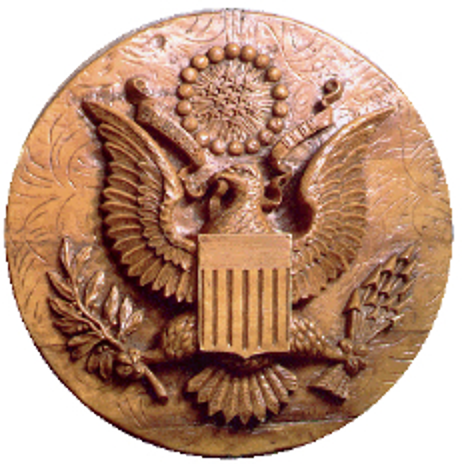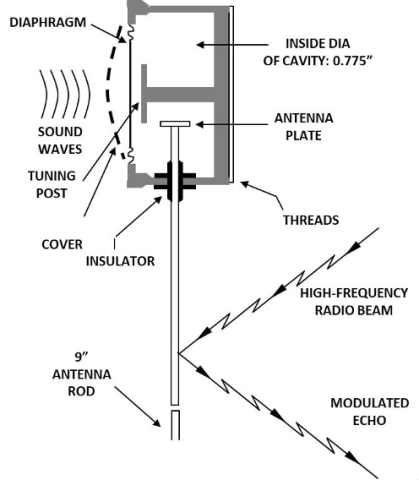The History Column: The Great Seal
The Great Seal (also known as ‘The Thing’) was an ingenious covert eavesdropping device deployed by the Soviets against staff at the US Embassy in Moscow. It was devised by the Russian scientist Leon Theremin, who also invented the electronic musical instrument which bears his name (perhaps most familiar in the theme music for the TV program ‘Star Trek’).
It took the form of a carved wooden representation of the Great Seal of the United States, approximately 0.6 m in diameter. It was presented by the Young Pioneer Organization of the Soviet Union to W. Averell Harriman, the United States Ambassador to the Soviet Union, on 4 August 1945 (just months after the end of WW2 in Europe), and took pride of place on the wall of the study in his residence.

Hidden within the wooden carving was a passive radio microphone, whose operation relied on illumination of the device by an external RF signal at a frequency around 330 MHz. As such, it was completely passive, and required no power supply. When the external RF signal was present, the re-reradiated signal was modulated by the audio picked up from the room, and could be received at a significant distance. Some accounts argue that it was actually a harmonic of the illuminating signal that was picked up, which would have removed the need to suppress the direct illuminating signal in the receiver.
The sketch below shows the internal structure of the resonant cavity. It contained a diaphragm that acted as a microphone, modulating the scattering from a monopole antenna element by varying the capacitance.

A replica of the Great Seal is on display at the National Cryptologic Museum of the National Security Agency at Fort George G. Meade in Maryland, USA.
Written by Hugh Griffiths, University College London

